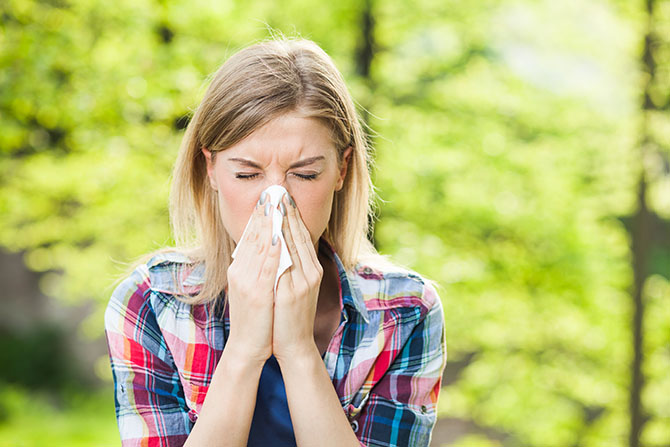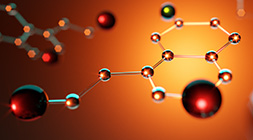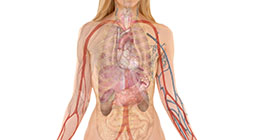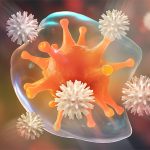
Overview
Symptoms
Causes
Prescription
Health Tips
For most sufferers, allergies are a situational or seasonal problem causing unbearable symptoms. Pet dander or the pollens of spring and autumn may cause itchy eyes, runny nose, sneezing, wheezing, and more. Yet, for many people allergy symptoms never seem to abate; they are a constant problem. Common environmental exposures and foods trigger asthmatic attacks and other allergic reactions. But why is it that only some are affected by allergies while others are not?
There are two types of allergic response: the first is a classic allergic response where the allergen (e.g., pollen, shellfish, pet dander) triggers an increase in immunoglobulin E (IgE); and the reaction is immediate. This response is easily determined by a blood test, which will show a high count of IgE antibodies. The IgE antibodies meet an allergen and then trigger a release of chemicals (including histamine) from mast cells that are intended to kill or immobilize the invader. Allergies that are mediated by IgE are called atopic. Allergens can initiate different symptoms depending upon which area of the body they invade or settle. An upper respiratory tract irritation will manifest as sneezing and a runny nose, while the same allergen in the lower respiratory tract will produce wheezing or coughing.
The second type of allergic response is cell-mediated or delayed-onset response. These responses are more difficult to diagnose as the symptoms may not occur immediately. Delayed-onset allergies are cell-mediated in that they show an increase in IgG antibodies. The symptoms tend to be in the gastrointestinal tract in the form of gastric upsets, diarrhea, irritable bowel, hyperactivity (in children), and brain fog-type symptoms.
Many illnesses, including autoimmune disorders, arthritis, attention deficit hyperactivity disorder (ADHD), and inflammatory diseases are associated with or arise from years of untreated or hidden allergies.
Symptoms
Allergies can elicit a cornucopia of symptoms that are so wide and varied that it can be difficult to detect particular allergens, and the symptomatic response is commonly confused for some other condition. Depending on the allergic response various parts of the body may be affected. It is known that allergens evoke symptoms by engaging the immune system at many different sites in the body. An unruly immune response to pollens in the upper respiratory tract can result in sneezing and a runny nose, or as it is more widely known, allergic rhinitis. The same pollen can cause an immune response in the lower respiratory system with symptoms such as wheezing or asthmatic reactions. That same pollen can also cause an immune reaction in the digestive system. The deadliest of reactions is when the offending substance gets into the bloodstream and causes anaphylaxis characterized by respiratory distress, fainting, itching, hives, and often, shock.
Common digestive reactions:
- Cramps
- Nausea, bloated stomach, heartburn, stomach ache
- Stomach distress, diarrhea, gas
Eyes, ears, nose and throat reactions:
- Blurred vision
- Congested nasal passages
- Earache
- Headaches
- Inflamed tonsils
- Itchy, red or watery eyes
- Recurrent throat infections
- Red, swollen or burning ears
- Runny, congested, or itchy nose
- Sneezing
Skin reactions:
- Dermatitis
- Hives
- Itching
- Skin rashes, eczema
Mood and mental reactions:
- Brain fog, lack of concentration, poor memory
- Depression, anxiety, mood swings, irritability
- Fatigue
- Hyperactivity
Additional reactions include:
- Arthritic pain
- Bedwetting in children
- Dark circles under the eyes
- Edema
- Excessive sweating
- Extreme salivation
- Frequent urination
- Insomnia
- Muscle pain
Causes
Our immune system is causing the allergic symptoms in its heroic effort to rid the body of what it sees as invaders. This is not a normal response and occurs only in those who have a hyperstimulated or overly sensitive immune system. In an allergy-prone person, when the immune system encounters an allergen such as pollen, the T-helper-2 cell releases an immune factor called interleukin-4 (IL-4). Interleukin-4 causes B cells to secrete IgE antibodies that then attach to mast cells. Mast cells release a cascade of chemicals, including histamine, which promote allergic symptoms. Gamma-interferon is also reduced in allergic persons and gamma-interferon is responsible for stopping IL-4. Without adequate gamma-interferon, the allergic reaction is not inhibited. Histamine is therefore responsible for many of the symptoms experienced, such as watery eyes, itchy skin, and more.
In asthmatics the situation is even worse because not only does the immune system release interleukin-4 but also an immune factor called interleukin-6 (IL-6). In asthmatics interleukin-6 causes lung tissue damage and if not controlled, can lead to reliance on steroid medications and puffers. The key to halting allergies in their tracks is stopping interleukin-4 from being released in the first place and controlling interleukin-6.
Climate change may also increase allergy rates and severity. A warmer climate and shorter winter combined with greater levels of carbon dioxide are increasing air allergens from certain plants and trees in some regions.
Children raised in environments where people smoke cigarettes, or other smoked or vaped ingredients are more prone to allergies and asthma.
The following substances are generally responsible for anaphylactic reactions:
- Foods: citrus fruits, mango, strawberry, nuts (Brazil, cashew), legumes (soya bean, peanut), shellfish, chocolate
- Medications: hormones (insulin, parathormone), antibiotics (penicillin)
- Vaccinations: tetanus, diphtheria
- Venoms: wasps, bees, yellow-jackets, hornets
Prescription for Health
Eliminate Allergens
Allergic conditions, although not often fatal, are extremely debilitating and very difficult to treat. Elimination of as many of the offending substances as possible is step one, while adding the proper nutrients and nutrition to help support the body’s healing process. Minimizing exposure to offending allergens will also help the immune system correct itself and stop the inflammation response. This is especially true with food allergies where the gastrointestinal tract is damaged and needs to be repaired. If the allergy-causing food is removed, inflammation will stop, and the body turn its attention to fixing the damage it has provoked.
It is important to start a diet diary, writing down everything consumed for one week to see if there is any correlation to symptoms. Offending foods, once discovered, should be eliminated for a period of six months. Rotation diets, where the same foods are not eaten more than once per week have also provided a reduction in allergic reactions.
An elimination diet is a reliable method for determining allergy-causing foods. Rice, water and free-range chicken — and nothing else — should all be consumed for at least two weeks. Then foods should be re-introduced (as recommended for infants), one at a time; meaning, just adding one food per week. This is an extremely effective method of determining food allergies; although it is difficult to follow it is well worth it in the end. Once determination of each food allergy is achieved, a nutrition program should be designed to ensure one gets adequate protein, vitamins and minerals. Consume a diet that emphasizes natural, whole foods such as legumes, fresh fruit and vegetables, fish, healthy fats and oils, and nuts and seeds. Processed or junk foods should be avoided as they are nutritionally void and contain chemicals that stress the body. Use cayenne, onions and garlic liberally as they are high in quercetin.
Ask for a referral to an allergy specialist and get tested for possible triggers. Some allergies may be detected only with the help of an ELISA/ACT (enzyme-linked immunosorbent assay) test. The ELISA/ACT allergy test may rule out delayed-onset allergies. Avoid all these allergens once they have been determined.
Keeping the Home Allergen-Free
Air borne allergens are particles that may be inhaled while breathing and which can cause allergic reactions. Dust mites, molds, pollens, animal dander, perfumes and other chemicals have all been identified as allergens and these must be eliminated from the home where possible to reduce the chances of exposure. Also:
- Buy and use a vacuum that has a HEPA filter.
- Do not wear shoes in the house and change clothing when entering the home from outside. This will reduce the numbers of pollens and mold spores making their way into the home.
- Have the home checked for environmental hazards such as lead and asbestos.
- Keep pets out of bedrooms and off furniture if possible.
- Purchase and use dust mite covers for mattresses, quilts, and pillows.
- Shower before bed to remove pollens and other allergens from hair and body.
- Use washable slipcovers for furniture.
- Vacuum, mop, and dust with a damp cloth once a week.
- Wash bedding at least once a week.
Plant sterols and sterolins halt the release of IL-4, so that histamine is not released, and allergies may be controlled. As well, sterols and sterolins normalize the release of interleukin-6 and protect lung tissue from further destruction.
| Nutrient | Dosage | Action |
|---|---|---|
| Moducare®
(Beta-Sitosterol, Beta-Sitosterolin-Beta-D-Glucoside) |
20 mg / 0.2 mg
Adults and children 17 years and older take 1 capsules three times daily OR 2 capsules upon rising and 1 capsule before bed. Children 5 to 10 years take 1 capsule or chewable tablet, one to two times daily. |
Helps to support a healthy immune system balance; treats allergy symptoms, including runny nose, itchy nose and eyes, and congestion; stops allergic response before it begins; decreases IL-4 and IL-6 activity; is excellent for all allergies |
| RespirActin | 2 oz (56 g) twice daily | Works as a natural antihistamine, opens congested airways |
| Quercetin | 500–1000 mg two to three times daily (children five and up: half the dosage) | Stops histamine release; is antiallergenic and antioxidant; especially effective for those sensitive to airborne allergens |
| Vitamin B12 | 500 mcg twice daily or 1000 mcg injection with folic acid once weekly for four weeks | Reduces or stops asthmatic symptoms associated with allergies |
| Vitamin C | 1000 mg twice daily | Reduces severity and occurrence of allergy attacks |
| Magnesium bisglycinate or threonate | 500 mg three times daily | Acts as a bronchodilator and antihistamine; reduces stress |
| Reduced L-glutathione | 45–100 mg daily | Increases intracellular glutathione; is excellent for inhalant allergies and chemical sensitivities |
| Borage oil | 1000 mg daily | Is anti-inflammatory |
| Digestive enzymes | One or two capsules with each meal | Aids digestion; is important for food allergies and to repair leaky gut |
| Lactobacillus gasseri, Bifidobacterium bifidum, and Bifidobacterium longum | Two daily probiotic capsules each containing 1.5 billion bacteria | Improves intestinal flora; helps those with food allergies, asthma, allergic rhinitis |
| Stinging nettle (Urtica dioica) | 300 mg twice daily | Is effective in allergic rhinitis |
| Omega-3 fatty acids | 1–2 Tbsp (15–30 mL) of flaxseed oil daily or 3–5 g of fish oil | Reduces inflammation, deficiency upsets immune system balance |
Health Tips to Enhance Healing
- Avoid allergens whenever possible.
- Avoid foods that contain sulfites, such as dried fruits, wine, and beer.
- Drink plenty of pure, filtered water — it controls histamine production. For every alcoholic beverage one has, drink another glass of water.
- Make the living environment as allergy-proof as possible.
- Men with facial hair may be aggravated by airborne allergens due to build up on the surface of the mustache, goatee or beard.
- Rotate the foods eaten; avoid eating the same foods every day.
- Rule out leaky gut syndrome, which can lead to food allergies and seasonal allergies.
- Stop smoking and avoid second-hand smoke or vapour.
- Stress can aggravate allergies so get plenty of rest and relaxation.
- Take fish oil and probiotic supplements during pregnancy as these may help reduce the incidence of childhood eczema and food allergies.
- Use a neti pot daily to help remove allergens from the nasal passage.
- When using herbal remedies, keep in mind that the herbs may belong to the same plant family as allergens; for example, having an allergy to legumes may also elicit a reaction to red clover, soybean extracts, or astragalus.











